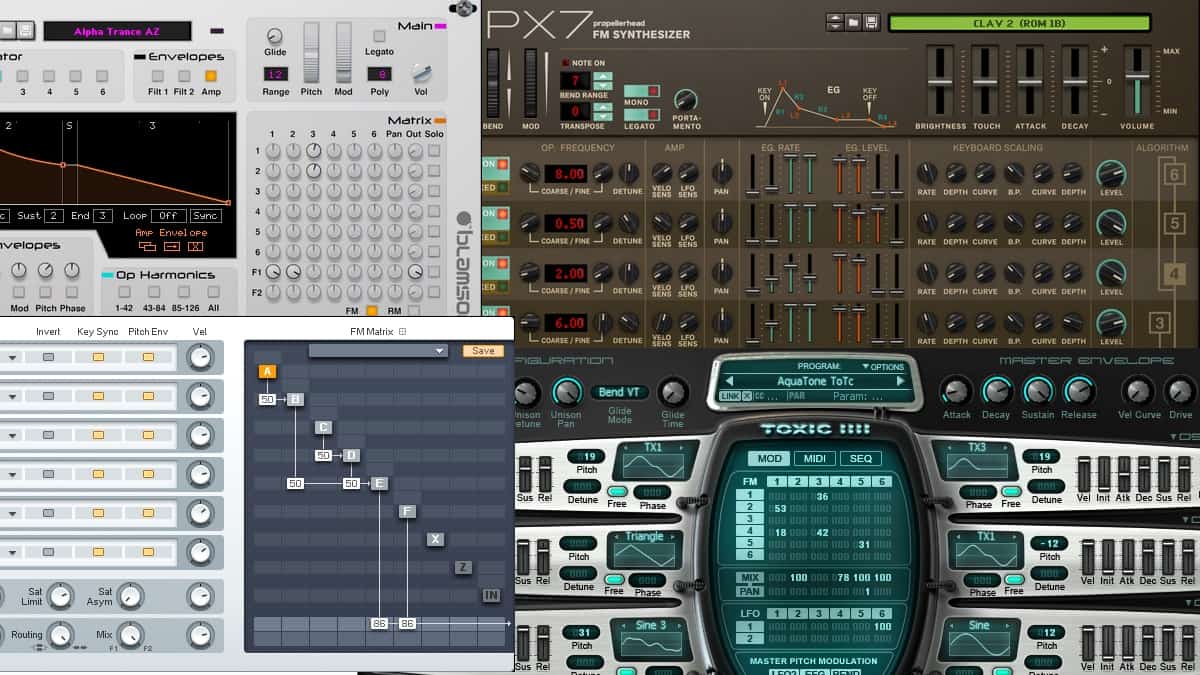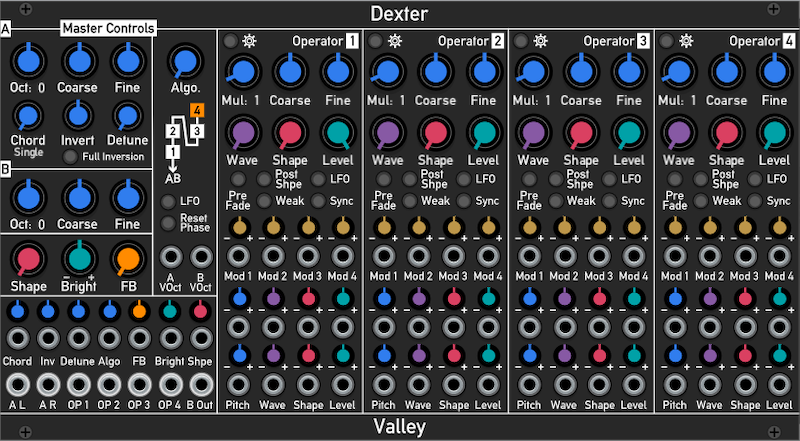Columns
Modular Synthesis for Beginners: FM Synthesis Explained

If you don’t have a thorough understanding of what FM synthesis is or how it works, start here.
FM synthesis has always had a reputation as being a bit hard to understand. This reputation is not entirely undeserved. In truth, however, FM is both easier to use and more useful musically than you may suspect. I’m not going to try to nail down every detail of either the theory or the practical details in this column. But if you’d like to take a look at FM, or if you’ve tried it and gotten stuck, you’ve come to the right place.
Let’s clear up one technical detail right off the bat. FM stands for frequency modulation. In fact, most FM synthesizers use a closely related technique called phase modulation, and the two are not quite identical. But we’re not going to get into that. Everybody calls it FM, so we’ll do that too.
Let’s start with a quick bit of history.
Wayback Machine, 1983
FM synthesis leaped into the world of electronic music with the introduction of the Yamaha DX7 in 1983. A couple of commercially available instruments had used FM prior to that time, but the DX7 tore the roof off.
There were several reasons for its runaway success; FM synthesis was only part of the package. That year saw the introduction of MIDI, and the DX7 was the second synth to include MIDI jacks. (The first, for trivia buffs, was the Sequential Prophet-600, which beat the DX to market by a month or so.) The DX7 had 16-note polyphony, which was two or three times more notes than any other keyboard synth had ever had. It had a velocity-sensing keyboard, which was quite rare at the time. And its retail price ($1,995) was about half of what you would have had to pay for a great-sounding five-voice non-velocity-sensing synth.
Also, FM. The DX7 produced incredibly detailed sounds. The presets sparkled. No other affordable synth had ever sounded so crisp.
As the years rolled on, musicians started to feel that this crisp, sparkling sound was actually rather cold and clinical. The sound of analog synths, which many in the ’70s initially had criticized as sterile, began by comparison to seem warmer, more organic. As other manufacturers found ways to compete with Yamaha, FM became only one of a number of sound flavors that musicians could draw on.
Under the Hood
In FM synthesis, the signal from one oscillator (called the modulator) controls the frequency of another oscillator (called the carrier). At a bare minimum, to do FM you need two oscillators—a modulator and a carrier. Normally, the carrier is the one that you actually listen to.
If the modulator is set to a low frequency, it’s an LFO (low-frequency oscillator). That means the frequency of the carrier rises and falls at a nice, slow rate. What you get is good old-fashioned vibrato. But when the frequency of the modulator is more than 20Hz—that is, when it’s in the audio range rather than sub-audio—our ears no longer perceive the result as vibrato. Instead, the modulation produces a change in tone color. In a nutshell, that’s what FM is all about.
The resulting tone color depends on several factors. The most important are the relative frequencies of the carrier and modulator, and the amplitude of the signal coming from the modulator.
When the frequencies of the two oscillators have a simple numerical relationship (such as an octave), the tone will be consonant. When the two frequencies are not closely related, though, the tone will have some clangorous (inharmonic) partials. The loudness of the overtones will depend on the amplitude of the modulator.
The oscillators in the DX7 produced only sine waves. You can use any waveform you like for FM synthesis, but sine waves are often the best choice because they’re simple and pure in a mathematical sense. If you use waves that have more partials, the FM process will operate on each partial. The results will get out of hand quickly: you’ll end up with a tone that’s full of noise. But if you keep the modulator’s amplitude at a low level, you can use other waveforms to produce a variety of tone colors.
These days many FM synths are found in the form of computer software, which is fitting since the DX7 was a digital synth. The image at the top of this column is a collage of four of them. Clockwise from upper left, pictured are Blamsoft Zero, Reason Studios PX7, Image-Line Toxic Biohazard, and Native Instruments FM8. PX7 is designed to be 99% authentic as a duplicate of the DX7. With the other three, I’ve arranged the image so as to show the flexible patching between modulators and carriers.
Building Blocks
In this month’s video, I’m using a module in VCV Rack called FM-OP. There’s a reason for the name. The DX7’s tone production used what Yamaha called operators. An operator, in Yamaha-speak, is a bundle containing an oscillator and an envelope generator. The envelope generator controls the amplitude of the oscillator.
The FM-OP module from Bogaudio has its own built-in ADSR envelope for exactly this reason. You can certainly do FM with other modules and other types of patches—for instance, using oscillators, separate envelope generators, and VCAs—but having the oscillator and envelope together works well.
The DX7 had six operators, not just two. They could be configured in various ways. You could have three separate modulator/carrier pairs, with each pair producing part of a composite sound, but numerous other configurations were possible. Two or three modulators could be modulating a single carrier at the same time, for instance. Yamaha called these configurations algorithms, so you and I may as well use that term.
Using the envelopes is a vital part of FM synthesis. You can use a very short, snappy envelope on a modulator, for example, to add an attack transient to a sustaining tone. An envelope with a slow attack can add a long, gradual swell to the tone.
In essence, the amplitude envelopes on the modulators work rather like a filter envelope on an analog synth. When the modulator is at its greatest amplitude, the tone of the carrier will have the most partials. As the modulator’s amplitude falls, the partials in the carrier’s tone will diminish or disappear. This isn’t a perfect analogy, because the frequency relationship between the carrier and modulator will determine which partials you hear.
If the carrier has a low frequency and the modulator has the same or a higher frequency, the modulator’s EG will produce a lowpass filter effect. On the other hand, if the carrier has a high frequency and the modulator a lower frequency, the modulator’s EG will produce something similar to a highpass or bandpass filter effect.
That’s an awfully wordy description. The video will make it clearer, I hope.
In addition to the VCV patches in this month’s video, I’ve included a bonus patch showing how you can use FM for some exotic drumming. There are two versions of this patch: fm_drums.
Hmm—I haven’t written anything yet about Euclidean rhythms. Maybe that’s a good topic for next month.
To get started on Jim Aikin’s “Modular Synthesis for Beginners,” especially if you’re unfamiliar with the free modular soft synth VCV Rack, begin with his first column in the series, “READY TO RACK!”


















